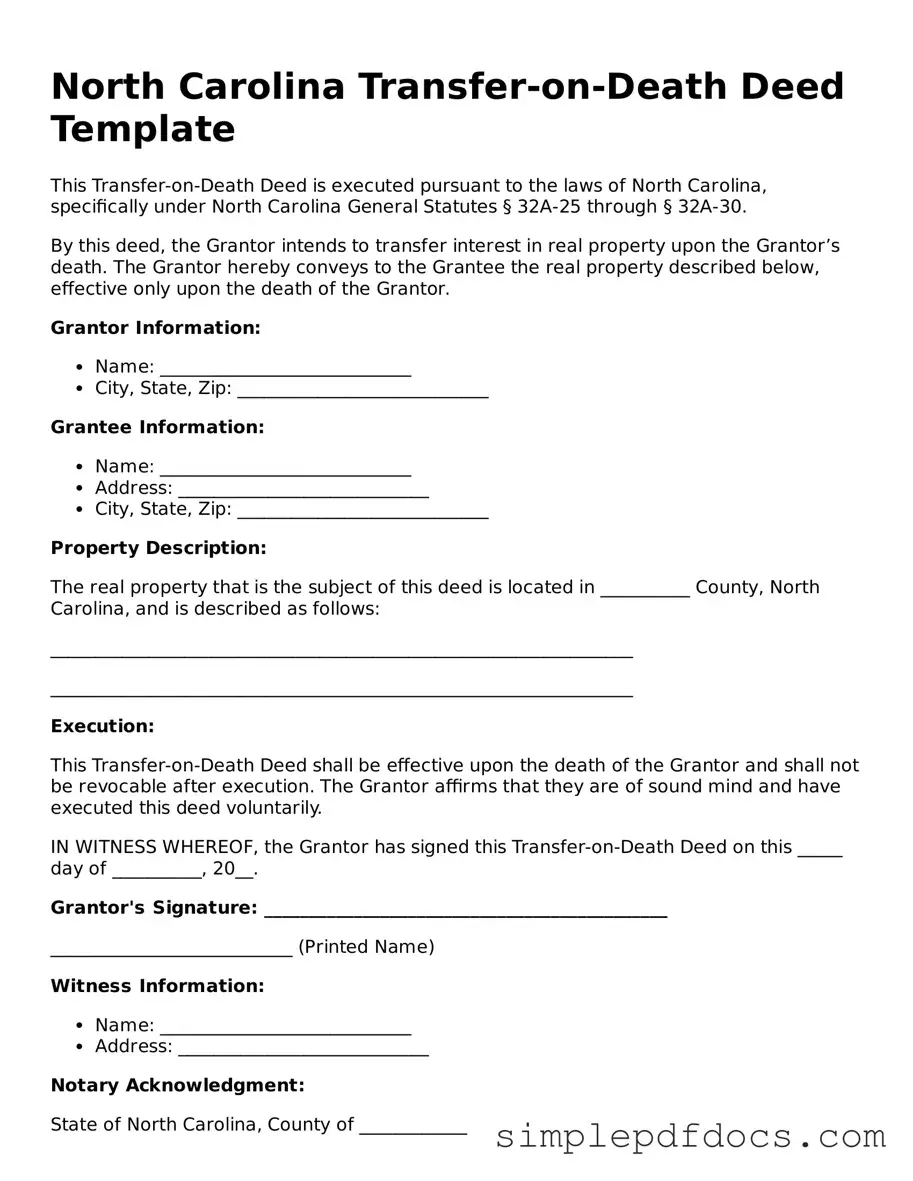The North Carolina Transfer-on-Death Deed form provides a straightforward mechanism for property owners to transfer real estate to designated beneficiaries upon their death, effectively bypassing the often lengthy probate process. This deed allows individuals to retain full control over their property during their lifetime, ensuring they can sell, mortgage, or alter the property as they see fit without any impact on the beneficiaries. Once the property owner passes away, the deed automatically transfers ownership to the named beneficiaries, provided the deed is properly executed and recorded. This form is particularly advantageous for those looking to simplify the transfer of property to heirs, as it can help avoid potential disputes and complications that may arise in traditional inheritance scenarios. Additionally, the Transfer-on-Death Deed does not impose any immediate tax consequences, making it an appealing option for many property owners in North Carolina. Understanding the nuances of this deed, including the necessary requirements for execution and recording, is essential for anyone considering this estate planning tool.
